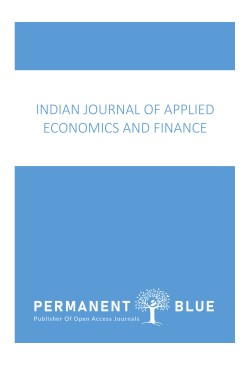MARK YOUR PRESENCE IN THE ACADEMIC WORLD. JOIN PERMANENT BLUE TO FULFIL YOUR INTELLECTUAL PURSUIT.
Journal Home
Indian Journal of Applied Economics and Finance : invites submissions for its upcoming issues. IJAEF is a peer-reviewed, open-access journal publishing original research articles, reviews, and case studies on Economics, Finance, Accounting and related fields.
INSTRUCTIONS FOR AUTHORS
Papers must be in English only.
All papers submitted to the journal will be reviewed through a double-blind peer-reviewed process (1–3 reviewers).
All papers should be typewritten in Word (Times New Roman) and emailed to Editor-in-Chief: editorijaef@gmail.com
The maximum length of the article in double space with 12 pt font size is 30 pages including graphs, tables, and others.
The title page should include the article’s title and the author’s name and affiliation. Address details should include telephone number and email.
The second page should contain the title of the paper, abstract, Keywords, and JEL classification codes. The abstract should not exceed 150 words (100 – 150 words). JEL classification codes are up to three, and Keywords are up to five.
The text of the article should include section headings (designated by Roman numerals – I, II. III,…), and subsection headings (Arabic numbers – 1, 2, 3,…).
References should be given in the following form:
- Becker, G. S. 1964. Human Capital. New York, National Bureau of Economic Research.
- Friedman, M. and A. J. Schwartz. 1963. A Monetary History of the United States, 1867-1960. Princeton, N.J.: Princeton University Press.
- Moffitt, R. A. 2003. “The Negative Income Tax and the Evolution of U.S. Welfare Policy, “ Journal of Economic Perspectives, 17(2), 119-140.
- Shleifer, A. and R. W. Vishny. 2003. “Stock Market Driven Acquisitions,” Journal of Financial Economics, 70(3), 295-311.
Do not use any footnotes, rather put all notes immediately following the article. Numbering should be done using the standard Arabic number system (1, 2, 3, etc.).
References should follow the Notes section at the end of the article.
Tables and graphs should follow the References section. Tables should be numbered consecutively and given a suitable caption and each table typed on a separate sheet.
